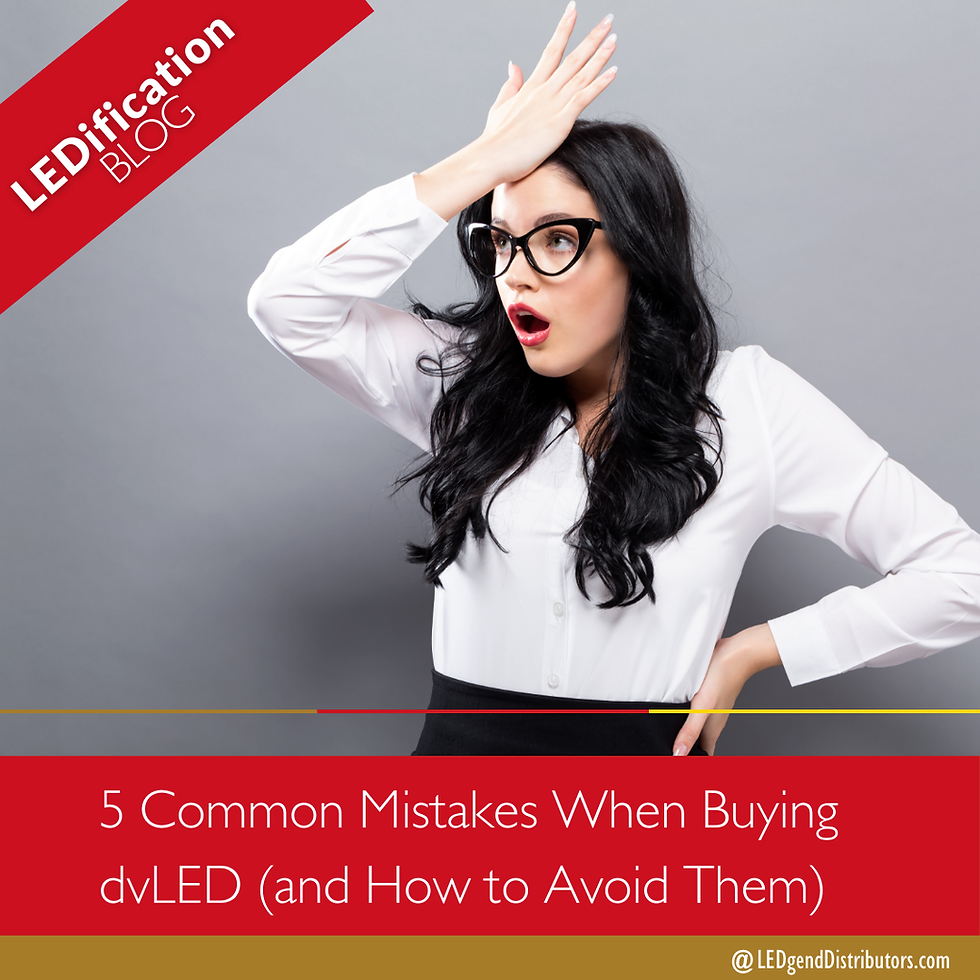Indoor vs. Outdoor dvLED — What You Need to Know Before You Buy
- kmcpoyle3
- Aug 20
- 2 min read

LEDification Blog | Education & Insights
Be Seen. Be Bold. Be LEDgendary. But first—be informed.
dvLED displays are transforming how businesses connect with customers, captivate crowds, and communicate messages — but buying the right one means knowing where it’s going to shine. Whether you’re lighting up a retail showroom or making a stadium LEDgendary, the first big decision you’ll face is indoor vs. outdoor dvLED.
Here’s what AV integrators, business owners, and display decision-makers need to know before choosing.
🌞 1. Brightness: Let There Be (the Right Amount of) Light
Indoor dvLED displays don’t need to battle sunlight, so they typically range from 600 to 1,200 nits of brightness. That’s perfect for boardrooms, lobbies, auditoriums, and other controlled lighting environments.
Outdoor dvLED displays, on the other hand, need to cut through sun glare and weather conditions—so think 2,500 to 10,000+ nits. If your screen’s facing the sun, don’t skimp. Your content won’t be seen unless your brightness is LEDgendary.
🛠 Pro Tip: Overestimate slightly on brightness. Dimming is easy. Fighting sunlight? Not so much.
☔ 2. IP Ratings: Your Weatherproof Playbook
If your display’s going outdoors, make sure it’s ready to weather the storm. That means understanding IP (Ingress Protection) ratings.
● Indoor dvLED: Often IP20–IP40 — enough for protection from fingers, dust, and curious kids.
● Outdoor dvLED: Look for IP65+, which offers strong defense against rain, dust, and the occasional flying French fry at your drive-thru.
🛡 The LEDgend Standard: All our outdoor displays come with verified IP ratings, not marketing fluff.
🧱 3. Installation Differences: Built to Thrive in Different Environments
Indoor installs are usually lightweight, sleek, and designed for seamless mounting in tight spaces — think flush-fit video walls or curved lobby screens.
Outdoor installs need to be rugged, sealed, and structurally supported. You’ll often require weatherproof enclosures, reinforced mounts, and temperature considerations.
⚙️ Remember: Outdoor installations often involve more permits and site prep. Plan accordingly.
🔌 4. Connectivity & Maintenance
Outdoor dvLED often requires remote diagnostics, cooling considerations, and access for servicing, especially if mounted high or exposed.
Indoor dvLED is easier to service on-site, and often integrates with existing AV infrastructure.
🧰 At LEDgend Distributors, we help you spec the right back-end gear too — from controllers to cabling — so you’re not caught off guard post-purchase.
🎯 5. Application Dictates the MVP
Ask yourself:
● Will the display be exposed to the elements?
● Will sunlight be a constant factor?
● Will it run 24/7 or only during business hours?
● Is interaction (touch, QR scans) part of the plan?
Your answers decide which product deserves the spotlight.
💡 Final Word from LEDgend
At LEDgend Distributors, we don’t just sell you a screen. We tailor solutions based on your environment, goals, and audience. Whether it’s for a sun-soaked stadium or a conference hall, we’ll help you find your MVP display — without the guesswork.







Comments